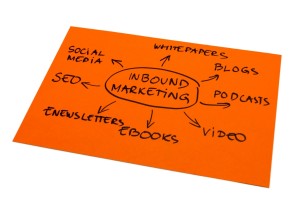 It’s no secret that inbound marketing is the way of the future, and that outbound marketing has begun to take its place in the past. Buyers in today’s world know what they want and know how to go about finding it. The Internet has become a huge tool for people to educate themselves and make informed decisions about their course of action. Buyers are in the driver’s seat, while marketers are in the passenger seat. The concept of inbound marketing is still new to some people. For this reason, we want to clear up any confusion by outlining 7 common misconceptions about inbound marketing.
It’s no secret that inbound marketing is the way of the future, and that outbound marketing has begun to take its place in the past. Buyers in today’s world know what they want and know how to go about finding it. The Internet has become a huge tool for people to educate themselves and make informed decisions about their course of action. Buyers are in the driver’s seat, while marketers are in the passenger seat. The concept of inbound marketing is still new to some people. For this reason, we want to clear up any confusion by outlining 7 common misconceptions about inbound marketing.
Inbound Marketing Relies on Luck to Connect with Customers.
Some traditional marketers believe that inbound marketing releases messages into the abyss of the internet in hopes that luck will drive leads and sales. This is incorrect. We know our buyers very well. In fact, we have methods, data, and analysis techniques to build and refine remarkable content to attract, engage, and delight our website visitors.
2. Content is not targeted.
We monitor our techniques in order to provide the best solutions at every stage of the buyer’s journey for our website visitors. We build on human connections by giving the people what they want: solutions to their problems. We can also personalize our content by asking the proper questions on our website forms. The more information we have about our visitors, the better able we are to determine what they are looking for and which type of information should be distributed to them.
3. Social media is forgotten or pushed aside.
This is not only false, it’s a bit ridiculous. Social media is one of the most powerful tools associated with the inbound methodology. Social media has become a platform for human communication, news, and marketing in recent years and it would be silly of us not to take full advantage of it. Social media sites also provide us with an audience that is interested in our brand, who we can engage with, and ask questions to. According to HubSpot, social media has a 100% higher lead-to-close rate than outbound marketing.
4. It takes months/years to build an audience for your content.
I would be lying to you if I said inbound marketing as a whole doesn’t take much time. It is a time-consuming discipline, and if you are just starting out setting up your blog and social media accounts it may take time to gain followers. However, if you are already an established brand or product, chances are this process will go quick. If not, clarifying your buyer personas and where they hang out online (Facebook, Twitter, Tumblr) will be key in identifying and attracting your audience.
5. You Can’t Measure ROI
Ha ha! This makes me laugh. Just because inbound marketing is done online, doesn’t mean it isn’t trackable. In reality, there is a ton of data to choose from, including clicks, downloads, and blog comments to make sure you know what’s working and how. Programs like Google Analytics, or our personal favorite – HubSpot, can help increase your brand’s SEO, reach, and track the success of your campaigns in order to ensure your business is reaching the correct audience and sending the right messages.
6. Customers have no idea an offer exists.
Outbound marketing fans believe that their method puts a product or service directly in front of the customer with no questions as to what to do with it. It is possible to make social media posts and write blogs that have no clear direction or offer, but inbound marketing doesn’t do that. Inbound marketing strategies promote content for specific campaigns that are developed for their buyer personas. In fact, calls-to-action are a critical part of each campaign we build. We are always striving to tell our visitors exactly what they need to do to get an offer or what their next step will be.
7. There is no proof inbound works.
Inbound marketing may be the new kid on the block, but its success has been proven. Hundreds of case studies have been done showing its achievements. Inbound marketing is more affordable too. In fact, according to HubSpot, inbound leads cost 61% less on average than leads from outbound marketing methods like radio ads, direct mail, or billboards.
Wow, that was a lot! Now that we’ve summed up some common inbound marketing misconceptions for you, we hope you have a better idea of just how well inbound marketing can and will work for your brand. The best part about inbound marketing is that you get to connect with your customers and deliver information they want and need. You’ll be seen as a problem-solver, inspiration, and expert in your field. What’s not to love?